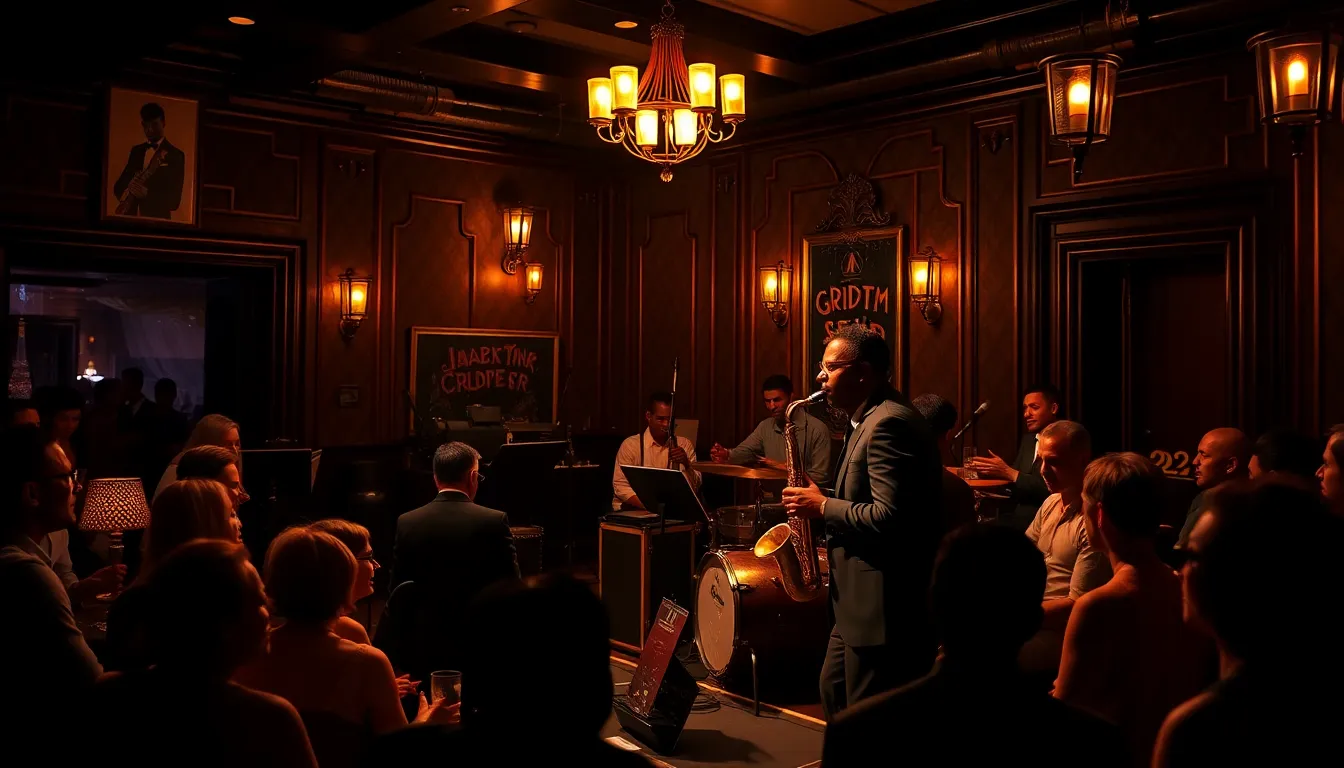In the bustling streets of Harlem during the early 20th century, a vibrant cultural explosion was underway, and jazz music was its heartbeat. This genre didn’t just set the stage for unforgettable performances; it sparked a creative revolution that transformed literature, art, and social thought. Imagine a world where the syncopated rhythms and improvisational flair of jazz inspired poets to pen verses that danced off the page, and artists to splash colors that sang.
Jazz was more than just a soundtrack; it was a movement that challenged norms and celebrated individuality. As musicians like Duke Ellington and Louis Armstrong took center stage, they ignited a fire of creativity that fueled the Harlem Renaissance. Dive into the world where notes and narratives intertwined, and discover how jazz became the lifeblood of an era that redefined African American culture.
How Did Jazz Music Influence the Harlem Renaissance
Jazz music emerged as a defining genre in the early 20th century, influencing various aspects of culture during the Harlem Renaissance. This unique sound blended African American musical traditions with elements from European music, creating a rich tapestry that resonated deeply in society.
Origins of Jazz
Jazz originated in the late 19th century in New Orleans, Louisiana. African American communities played a crucial role in its development, drawing from blues, ragtime, and spirituals. The cultural melting pot of New Orleans contributed to jazz’s distinct sound, where musicians often improvised and experimented with rhythm. As jazz spread northward, it gained momentum in cities like Chicago and New York, shaping the music landscape during the Harlem Renaissance.
Key Figures in Jazz History
Several influential figures shaped the jazz scene during the Harlem Renaissance. Louis Armstrong transformed jazz with his innovative trumpet playing and unique vocal style. Duke Ellington brought sophistication to jazz through his big band orchestration, leading to numerous iconic performances. Billie Holiday’s emotive singing conveyed powerful narratives, while Count Basie’s rhythmic piano stylings energized the genre. Each of these artists contributed to jazz’s evolution, ensuring its lasting impact on culture during this vibrant period.
The Harlem Renaissance: A Cultural Movement

The Harlem Renaissance marked a significant cultural movement in the early 20th century. Jazz music emerged as a vital expression of African American identity during this period.
Historical Context
Emerging after World War I, the Harlem Renaissance coincided with the Great Migration. African Americans moved from the rural South to urban centers seeking better opportunities. In Harlem, vibrant cultural exchanges flourished. Artists, writers, and musicians collaborated, creating an atmosphere rich in creativity. Jazz music played a critical role, encapsulating the spirit of freedom and innovation. It reflected both the struggles and triumphs of the African American community. By the 1920s, Harlem had become a cultural epicenter, with jazz clubs and theatrical performances drawing diverse audiences.
Major Contributors
Key figures significantly influenced the Harlem Renaissance through their contributions to jazz. Duke Ellington redefined jazz orchestration, blending various musical styles. Louis Armstrong revolutionized improvisation, captivating audiences with his unique trumpet style and vocal techniques. Billie Holiday brought emotional depth to her performances, resonating with listeners on a personal level. Count Basie introduced rhythmic precision and a distinctive swing feel, which became hallmarks of jazz music. Each artist not only advanced the genre but also helped shape the cultural identity of African Americans during the Harlem Renaissance.
Did the Harlem Renaissance Create Jazz
Jazz music played a crucial role in shaping the Harlem Renaissance, representing a creative force that resonated deeply within the cultural landscape. Its rhythms and improvisations reflected the spirit of the time, driving innovation and inspiring artists across multiple disciplines.
Musical Innovation and Expression
Musical innovation defined the essence of jazz during the Harlem Renaissance. Musicians constantly experimented with forms, introducing new sounds and techniques. Artists like Louis Armstrong revolutionized improvisation, while Duke Ellington expanded orchestration. Emerging styles like swing brought a fresh energy to performances, captivating audiences of varied backgrounds. Unique collaborations among musicians fostered a sense of community, allowing creativity to flourish. Each performance became an expression of individuality, where personal stories intertwined with collective identity.
Impact on Poetry and Literature
Jazz profoundly influenced poetry and literature of the Harlem Renaissance. Writers drew inspiration from jazz’s musicality, rhythm, and emotional depth. Poets like Langston Hughes infused their works with jazz themes, creating a distinctive style that mirrored the improvisational aspects of the genre. The interplay of words and music allowed authors to convey cultural experiences in vivid, dynamic ways. Literary gatherings often echoed the vibrant atmosphere of jazz clubs, fostering a rich interplay between spoken word and sound. This synergy not only enriched literary expression but also anchored African American narratives within the broader context of American culture.
The Role of Jazz Clubs and Venues
Jazz clubs served as crucial venues for cultural expression during the Harlem Renaissance. These spaces fostered creativity and collaboration among artists, musicians, and audiences.
Key Locations in Harlem
Renowned establishments like the Cotton Club and the Apollo Theater became central to Harlem’s vibrant jazz scene. The Cotton Club attracted a diverse clientele with its glitzy performances by figures such as Duke Ellington and Cab Calloway. The Apollo Theater showcased both emerging and established artists, providing a platform for talent and a space for social interaction. Other venues, including Small’s Paradise and Minton’s Playhouse, played significant roles in the development of bebop and modern jazz. Each location contributed to a unique atmosphere that celebrated innovation and brought together different communities.
Social Gathering Spaces
Jazz clubs offered more than just music; they became social hubs that united people from various backgrounds. Patrons mingled over drinks while enjoying impromptu performances, making these venues alive with excitement. People from the local community engaged with visitors, fostering dialogue and cultural exchange. Artists drew inspiration from the collaborative spirit present in these spaces, which encouraged experimentation and expression. Ultimately, jazz clubs served as the heartbeat of Harlem, shaping not only the music but also the social fabric of the Renaissance.
Lasting Legacy of Jazz in the Harlem Renaissance
Jazz music left a transformative legacy during the Harlem Renaissance, influencing both artists and communities in profound ways.
Influence on Future Generations
Influential musicians like Louis Armstrong set the standard for future jazz artists, emphasizing improvisation and personal expression. Langston Hughes and other writers drew inspiration from jazz rhythms, shaping their literary styles. This synergy encouraged a new generation of creators to explore their identities through art. Many artists today credit jazz for enhancing their understanding of freedom in expression. The roots of jazz continue to thrive, resonating through various music genres. Contemporary musicians often sample jazz elements, keeping the spirit alive. New artists frequently revisit the emotional depth found in jazz, fostering ongoing dialogue about cultural identity and innovation.
Impact on American Culture
Jazz music significantly impacted American culture and its evolution by bridging gaps between diverse communities. Establishments like the Cotton Club played vital roles in uniting people from differing backgrounds, shaping cultural conversations. The electrifying performances of jazz greats captivated audiences, drawing attention to African American artistry. This shift helped challenge stereotypes and broadened cultural acceptance. Jazz established itself as a symbol of resilience and creativity, enriching American musical heritage. Influences of jazz extend into modern genres, connecting past and present through shared sounds. Diverse expressions of jazz continue to be celebrated, reinforcing its integral role in American history and culture.
Conclusion
Jazz music served as a catalyst for the Harlem Renaissance, shaping the cultural identity of African Americans during this transformative era. Its innovative rhythms and improvisational spirit inspired artists and writers alike, fostering a unique blend of creativity that resonated throughout the community. The collaboration among musicians and poets created a vibrant atmosphere that not only celebrated individuality but also challenged societal norms.
As jazz clubs became essential venues for cultural expression, they united diverse audiences and encouraged dialogue. This synergy between music and literature enriched the artistic landscape, leaving a lasting legacy that continues to influence contemporary creators. The impact of jazz transcends its era, affirming its vital role in American culture and its ongoing relevance in discussions about identity and innovation.










